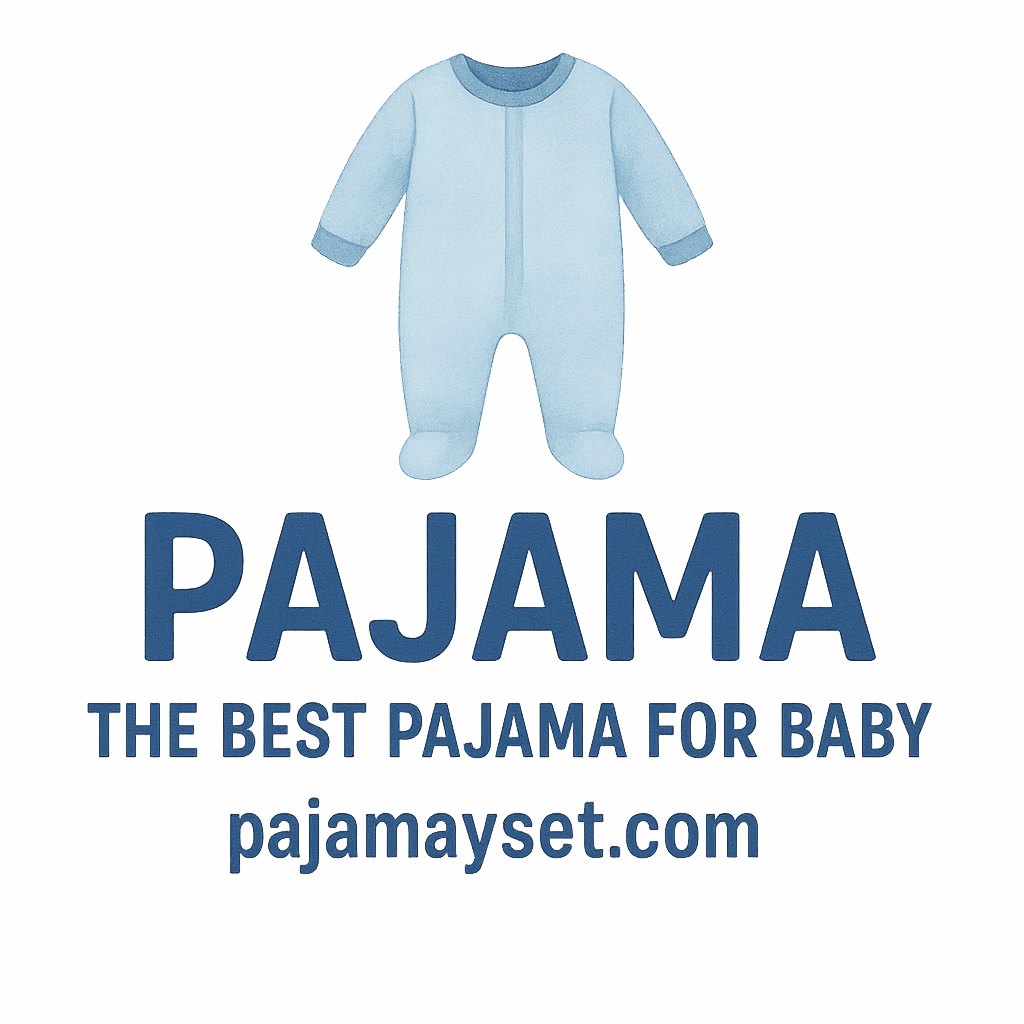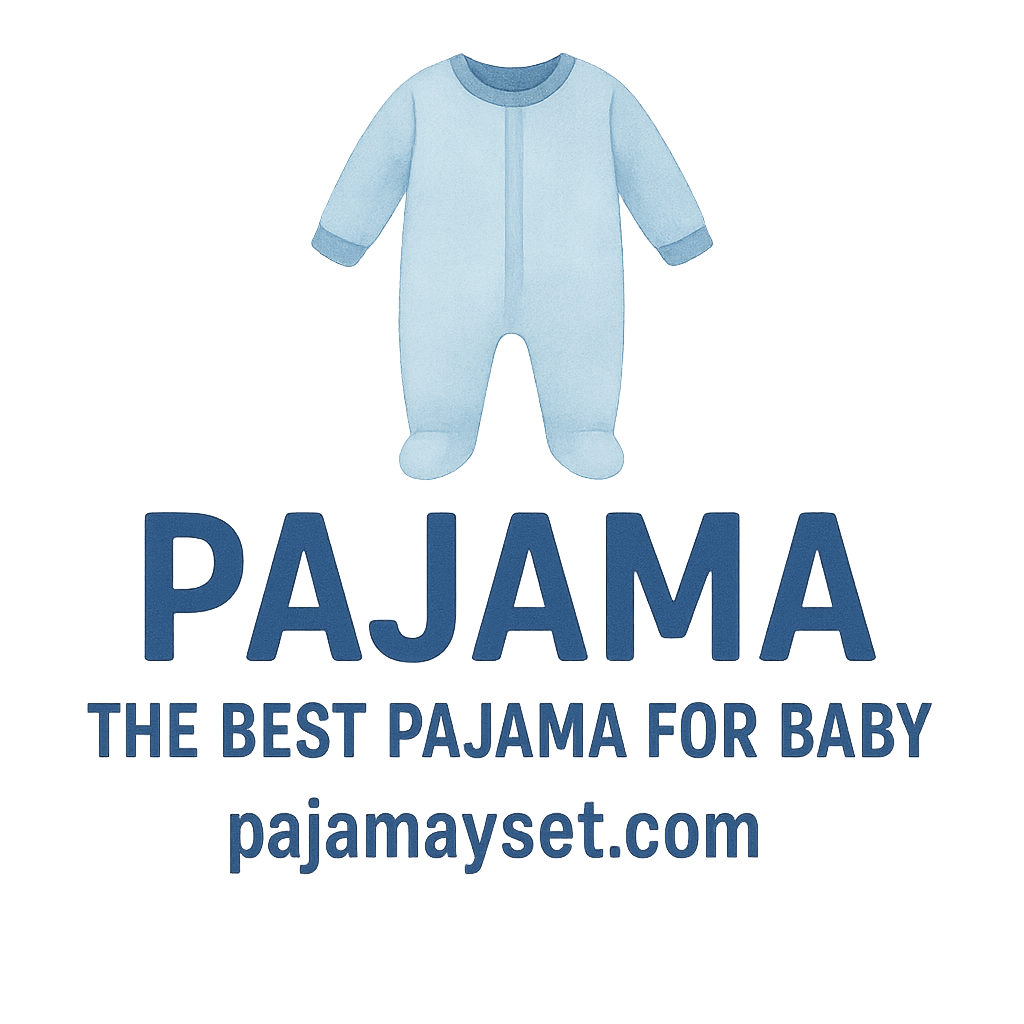Introduction
When it comes to babies, comfort is king. Their delicate skin, developing sensory systems, and natural need for warmth or coolness make pajama texture a crucial factor. Whether you’re picking out your baby’s first pair of pajamas or upgrading to something comfier, the fabric can make a huge difference in how well they sleep—and how comfortable they feel.
Why Pajama Texture Matters for Babies
Baby pajamas are more than just a cute outfit for bedtime. They serve as a barrier between your baby’s sensitive skin and the external environment, so it’s essential to understand how different materials interact with their skin. Let’s dive deeper into why texture matters for babies and how the right choice can contribute to a peaceful night’s sleep.
The Role of Pajamas in Baby’s Comfort
The fabric of your baby’s pajamas should feel soft against their skin, allow for temperature regulation, and help them feel cozy and secure. Babies spend a lot of time sleeping, so a comfortable fabric is essential for healthy development and optimal sleep quality.
Sensory Sensitivities in Babies
Babies are more sensitive to touch and texture than adults. As they grow and develop, their sensory system is becoming increasingly attuned to their environment. This makes fabric choice incredibly important. A fabric that feels rough or irritating could disturb your baby’s sleep or cause discomfort, while soft, breathable materials help them rest peacefully.
1. Cotton Pajamas: Soft and Breathable
Cotton is a classic choice when it comes to baby pajamas—and for good reason. It’s naturally soft, breathable, and gentle on delicate skin, which makes it an ideal option for newborns and older babies alike.
Why Cotton is Ideal for Baby Pajamas
Cotton is one of the most comfortable and breathable fabrics, helping to regulate body temperature while ensuring your baby stays dry throughout the night. It’s soft and absorbent, which makes it perfect for sleepwear.
Pros of Cotton Pajamas
- Breathability: Cotton allows air to circulate, keeping your baby cool in warmer temperatures.
- Hypoallergenic: Ideal for babies with sensitive skin or those prone to rashes.
- Comfort: Cotton is incredibly soft and gentle on your baby’s skin.
Related Link: Baby Pajamas and Safety
2. Fleece Pajamas: Cozy and Warm
When the weather turns chilly, fleece pajamas are a go-to option. The soft, fluffy texture traps heat, making it perfect for winter months or colder climates.
When to Choose Fleece for Babies
Fleece is ideal for colder temperatures, offering warmth without the heaviness of some other materials. It’s great for a cold night or during the winter season.
Benefits of Fleece Pajamas
- Warmth: Provides insulation to keep your baby warm.
- Softness: The soft, plush feel of fleece is cozy and comforting.
- Lightweight: Fleece provides warmth without being heavy or restrictive.
3. Silk Pajamas: Smooth and Luxurious
For a touch of luxury, silk pajamas are an option many parents turn to for their babies. Silk is known for its smooth texture and luxurious feel.
Silk’s Effect on Baby Skin
Silk is gentle on your baby’s skin, offering a smooth surface that reduces the risk of irritation or rashes. However, it is important to note that silk can sometimes be too slippery for babies and may not provide enough warmth in colder weather.
Silk Pajamas: Not Always the Best Choice
While silk pajamas are luxurious, they’re often more delicate and can be harder to maintain. Plus, they may not be the most practical for babies who tend to move around a lot.
4. Flannel Pajamas: Warm and Soft
Flannel is another warm fabric, perfect for cooler weather. It’s soft to the touch and offers excellent warmth while remaining comfortable.
The Comfort of Flannel Pajamas
Flannel is soft, cozy, and breathable. It also wicks away moisture, which can help your baby stay comfortable while sleeping. It’s often a go-to choice for colder months.
When Should You Use Flannel Pajamas for Babies?
Flannel is great for colder climates or winter nights. However, during warmer weather, it might be too heavy and could cause your baby to overheat.

5. Bamboo Pajamas: Naturally Breathable and Soft
Bamboo is another fabric gaining popularity in the world of baby sleepwear. It’s incredibly soft, breathable, and has natural moisture-wicking properties, making it an excellent choice for babies.
Bamboo’s Moisture-Wicking Properties
Bamboo is known for its ability to absorb moisture, making it a great fabric for babies who tend to sweat during sleep. It’s a breathable fabric that keeps babies comfortable throughout the night.
Why Bamboo Pajamas Are Good for Sensitive Skin
Bamboo pajamas are hypoallergenic, making them ideal for babies with sensitive skin or conditions like eczema. Bamboo fabric is naturally smooth and gentle, minimizing irritation.
Related Link: Pajama Materials Explained
6. Jersey Knit Pajamas: Stretchy and Flexible
If your baby is particularly active and likes to move around in their sleep, jersey knit pajamas could be a great option. These pajamas are stretchy, comfortable, and perfect for active little ones.
How Jersey Knit Benefits Baby’s Movement
Jersey knit pajamas are made from a stretchy fabric, offering freedom of movement. This is important for babies who are still developing their motor skills and need comfortable, flexible clothing.
The Comfort of Stretch with Jersey Knit Pajamas
Jersey knit pajamas are soft and flexible, making them ideal for babies who need unrestricted movement during the night.
7. Organic Cotton Pajamas: Safe and Eco-Friendly
For eco-conscious parents, organic cotton pajamas are a great option. These pajamas are grown without harmful pesticides or chemicals, ensuring that your baby’s skin is not exposed to potentially harmful substances.
Why Organic Cotton is Best for Your Baby’s Skin
Organic cotton is free from harmful chemicals, making it a safe and natural option for babies with sensitive skin. It’s soft, breathable, and hypoallergenic, ensuring your baby stays comfortable and safe.
Pros of Choosing Organic Cotton Pajamas
- Eco-friendly: Organic cotton is grown without harmful chemicals, making it a better choice for the environment.
- Softness: It’s just as soft and comfortable as regular cotton but safer for your baby.
8. Terry Cloth Pajamas: Absorbent and Soft
Terry cloth pajamas are commonly used for babies after bath time. The fabric is absorbent and helps wick away moisture, keeping your baby comfortable and dry.
Ideal for Post-Bath Pajamas
Terry cloth is great for keeping your baby warm after bath time. It absorbs water and dries your baby off quickly, ensuring they stay cozy.
Benefits of Terry Cloth for Baby Comfort
- Absorbency: Terry cloth is highly absorbent, making it perfect for post-bath wear.
- Softness: It feels soft against your baby’s skin and keeps them comfortable.
9. Wool Pajamas: Natural and Insulating
Wool pajamas are perfect for colder weather. Wool has natural insulating properties, keeping your baby warm and cozy without the bulkiness of other materials.
Is Wool a Comfortable Option for Babies?
Wool is generally more suitable for babies who are older and can tolerate the texture. It’s important to ensure that the wool is soft and not too scratchy.
Benefits of Wool Pajamas in Cold Weather
- Insulating: Wool is an excellent insulator, making it perfect for colder months.
- Breathability: Wool helps regulate body temperature, keeping your baby comfortable throughout the night.
Choosing the Right Pajama Texture for Your Baby
When choosing pajamas for your baby, it’s important to consider several factors like the season, the baby’s skin sensitivities, and their overall comfort.
Consider the Season and Weather
For warm weather, breathable fabrics like cotton or bamboo are ideal, while fleece or flannel are great for colder months.
Baby’s Skin Sensitivities and Pajama Texture
If your baby has sensitive skin, it’s best to choose hypoallergenic fabrics like organic cotton or bamboo to minimize irritation.
Consulting Experts for the Best Choices
Consulting pediatricians or baby sleep experts can also provide insights on the best fabrics for your baby’s comfort.
Conclusion
Choosing the right pajama texture for your baby can make a world of difference in their comfort and quality of sleep. Understanding each fabric’s unique qualities helps you make the best choice based on your baby’s needs and the current weather. From soft cotton to cozy fleece and breathable bamboo, there’s a perfect texture out there for every baby.
FAQs
Q1: How do I know if my baby is comfortable in their pajamas?
Signs of discomfort include restlessness, waking up frequently, or crying. You can also check for red marks or irritation on their skin.
Q2: Are organic cotton pajamas safer for babies?
Yes, organic cotton is free from harmful chemicals, making it a safer option for babies with sensitive skin.
Q3: Can I use fleece pajamas in hot weather?
Fleece is best for colder weather, as it can make your baby too warm in hot conditions.
Q4: What fabric is best for sensitive skin?
Bamboo and organic cotton are great choices for babies with sensitive skin.
Q5: How often should I replace my baby’s pajamas?
You should replace baby pajamas every 6-12 months or when they become worn out or too small.
Q6: Are wool pajamas suitable for babies?
Wool pajamas are suitable for older babies in cold weather but should be soft and non-itchy.
Q7: What’s the best fabric for summer baby pajamas?
Cotton and bamboo are the best choices for summer, as they are breathable and moisture-wicking.
Tanya ChatGPT


